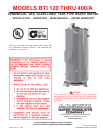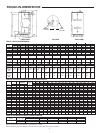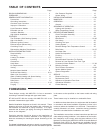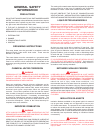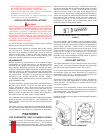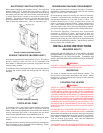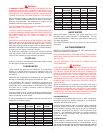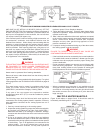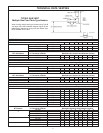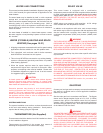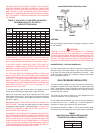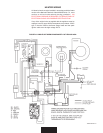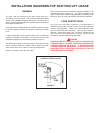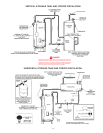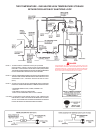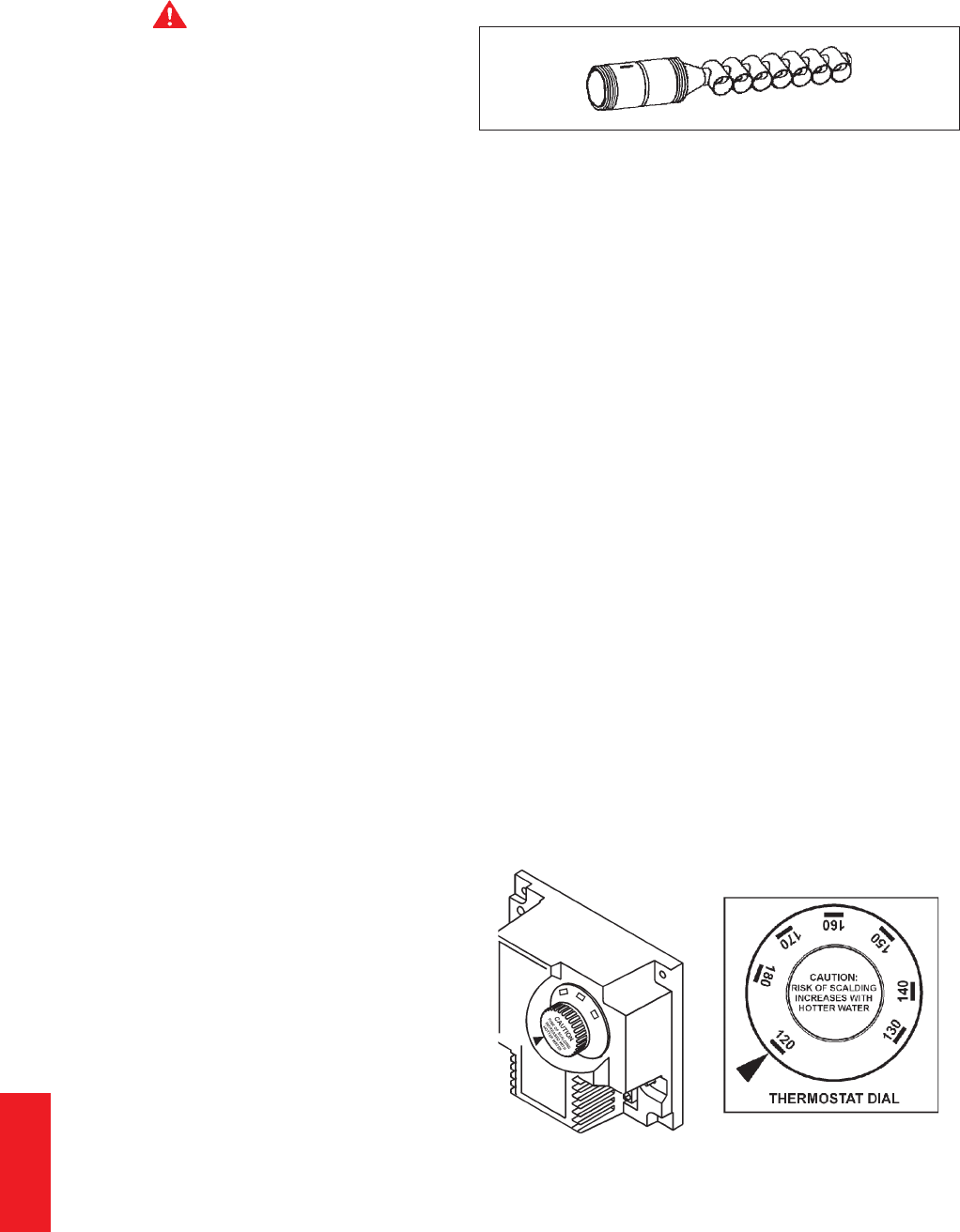
5
• Do not apply insulation to the top of the water heater, as this
will interfere with safe operation of drafthood.
•
Do not cover the temperature & pressure relief valve.
•
Do not cover the instruction manual. Keep it on the side of the
water heater or nearby for future reference.
• Do obtain new labels from A.O. Smith for placement on the
blanket directly over the existing labels.
HIGH ALTITUDE INSTALLATIONS
WARNING
INSTALLATIONS ABOVE 2000 FEET (610 METERS) REQUIRE
REPLACEMENT OF THE BURNER ORIFICE IN ACCORDANCE
WITH SECTION 8.1.2 OF THE NATIONAL FUEL GAS CODE
(ANSI Z223.1). FAILURE TO REPLACE THE ORIFICE WILL
RESULT IN IMPROPER AND INEFFICIENT OPERATION OF THE
APPLIANCE RESULTING IN THE PRODUCTION OF
INCREASED LEVELS OF CARBON MONOXIDE GAS IN EXCESS
OF SAFE LIMITS WHICH COULD RESULT IN SERIOUS
PERSONAL INJURY OR DEATH.
You should contact your gas supplier for any specific changes
which may be required in your area.
As elevation above sea level is increased, there is less oxygen
per cubic foot of air. Therefore, the heater input rate should be
reduced at high altitudes for satisfactory operation with the
reduced oxygen supply. Failure to make this reduction would
result in an overfiring of the heater causing sooting, poor
combustion and/or unsatisfactory heater performance.
REQUIREMENTS
Ratings specified by manufacturers for most appliances apply
for elevations up to 2000 feet (610m). For elevations above
2000 feet (610m), ratings must be reduced at the rate of 4% for
each 1000 feet (305M) above sea level. For example, if a heater
is rated at 120,000 Btuh (35kW) at sea level, to rate the heater at
4000 feet (1220m), you subtract 4 (once for each thousand feet)
x.04 (4% input reduction) x 120,000 Btuh (original rating) from
the original rating. Therefore, to calculate the input rating at
4,000 feet: 4 x .04 x 120,000 =19,200 Btuh, 120,000 - 19,200 =
100,800 Btuh (30kW). At 6000 feet the correct input rating should
be 91,200 Btuh (27kW).
The input reduction is primarily achieved by reducing the size of
the main burner orifices. To do this, the main burner orifices
require replacement with orifices sized for the particular
installation elevation. Correct orifice sizing and parts may be
obtained from A.O. Smith Water Products Company. When
ordering, be sure to state the model number and the altitude of
the location where the water heater is being installed.
Upon completion of derating of the heater, adjustment to the gas
pressure regulator may be required. See CHECKING THE
INPUT section in this manual for inlet and manifold pressure
requirements.
Also due to the input rating reduction required at high altitudes,
the output rating of the appliance is also reduced and should be
compensated for in the sizing of the equipment for application.
FEATURES
THE ELIMINATOR (SELF-CLEANING SYSTEM)
These units include The Eliminator (Self-Cleaning System)
installed in the front water inlet, See Figure 2. The Eliminator
must be oriented correctly for proper function. There is a marked
range on the pipe nipple portion of the Eliminator, that must be
aligned with the top of the inlet spud. A label above the jacket
hole has an arrow that will point to the marked portion of the pipe
nipple if the orientation is correct. If the arrow does not point
within the marked range on the pipe nipple, adjust the pipe
nipple to correct. A pipe union is supplied with the Eliminator to
reduce the probability of misaligning the Eliminator accidentally
while tightening the connection to the inlet water supply line.
Improper orientation of the Eliminator can cause poor
performance of the heater and can significantly reduce outlet
water temperatures during heavy draws.
Note: The inlet tube may have 1, 3 or 7 cross tubes.
FIGURE 2
For proper function, the Eliminator must be oriented correctly.
There is a marked range on the pipe nipple that must be aligned
with the top of the inlet spud (check for label on the appliance) to
assure proper operation. Please check to confirm that the
marked range is in alignment with the top of the spud. A pipe
union is supplied with the Eliminator to help eliminate the
possibility of changing the orientation by accidentally
overtightening the inlet supply. Improper orientation of the
Eliminator may cause temperature buildup issues or spells of
colder than usual water temperatures.
HIGH LIMIT SWITCH
The digital thermostat (Fig. 3) contains the high limit (energy
cutoff) sensor. The high limit switch interrupts main burner gas
flow should the water temperature reach 203°F (95°C).
In the event of high limit switch operation, the appliance cannot
be restarted unless the water temperature is reduced to
approximately 120°F (49°C). The high limit reset button on the
front of the control then needs to be depressed.
Continued manual resetting of high limit control, preceded by
higher than usual water temperature is evidence of high limit
switch operation. The following is a possible reason for high
limit switch operation.
A malfunction in the thermostatic controls would allow the gas
valve to remain open causing water temperature to exceed the
thermostat setting. The water temperature would continue to
rise until high limit switch operation.
Contact your dealer or service agent if continued high limit switch
operation occurs.
FIGURE 3 - DIGITAL THERMOSTAT



